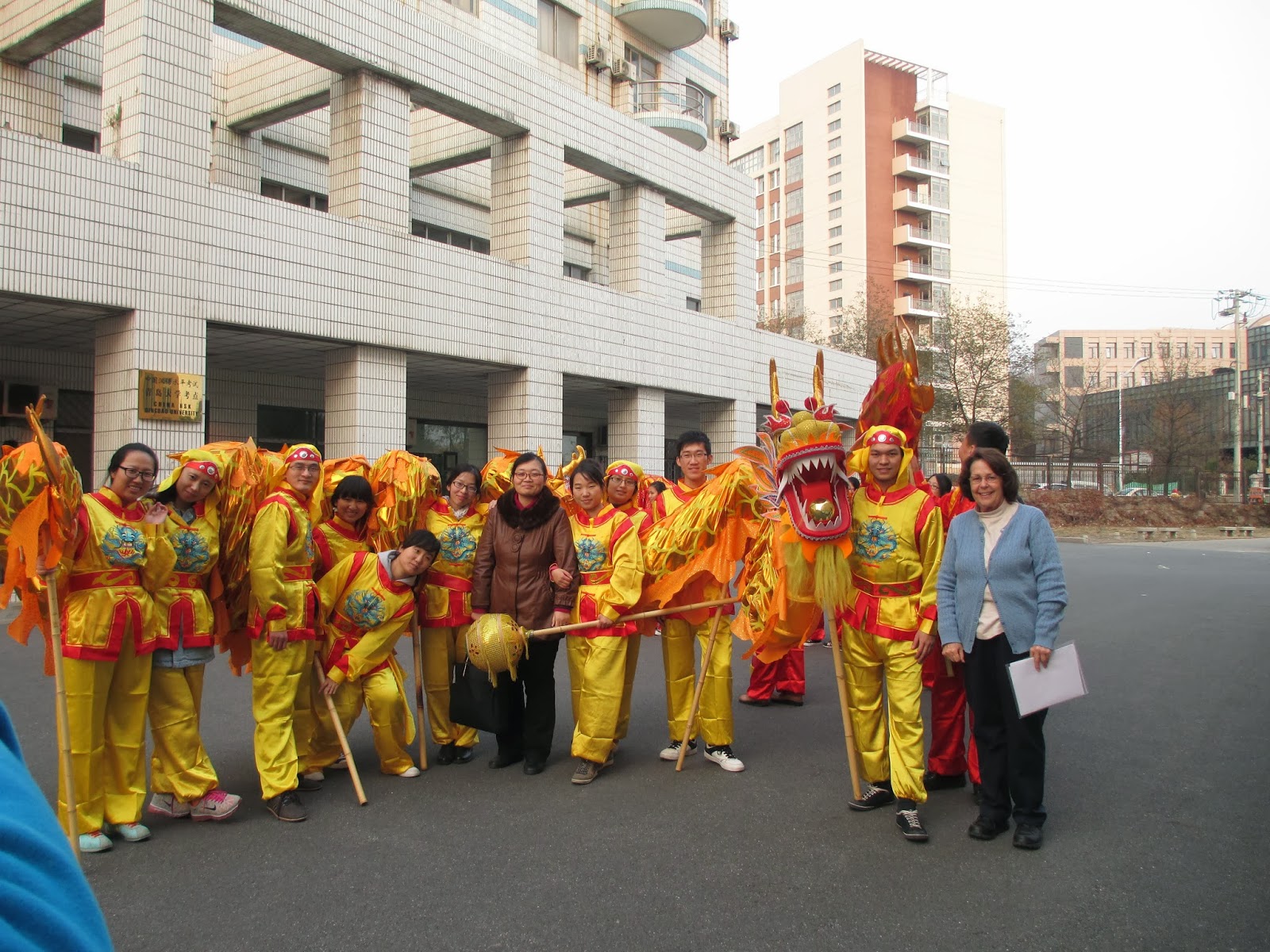In November Deanne had the opportunity to travel to Beijing.
Beijing; Chinese: 北京, is the capital of the People's Republic of China and one of the most populous cities in the world. The population as of 2012 was 20,693,000. The metropolis, located in northern China, is governed as a direct-controlled
municipality under the national government, with 14 urban and suburban districts and two rural counties
. Beijing Municipality is surrounded by Hebei Province with the exception of neighboring Tianjin Municipality
to the southeast.
Beijing is the second largest Chinese city by urban population after Shanghai and is the nation's political, cultural, and educational center. It is home to the headquarters of most of China's largest state-owned companies, and is a major hub for the national highway, expressway, railway, and high-speed rail networks. The
Beijing Capital International Airport is the second busiest in the world by passenger traffic.
The city's history dates back three millennia. As the last of the Four Great Ancient Capitals of China, Beijing has been the political center of the country for much of the past eight centuries. The city is renowned for its opulent palaces, temples, gardens, tombs, walls and gates, and its art treasures and universities have made it a center of culture and art in China. Encyclopedia Britannica notes that "few cities in the world have served for so long as the political headquarters and cultural centre of an area as immense as China."
To learn more about Beijing visit: http://en.wikipedia.org/wiki/Beijing
The Great Wall of China
The Great Wall of China is a series of fortifications made of stone, brick, tamped earth, wood, and other materials, generally built along an east-to-west line across the historical northern borders of china in part to protect the Chinese Empire or its prototypical states against intrusions by various nomadic groups or military incursions by various warlike peoples or forces. Several walls were being built as early as the 7th century BC, these, later joined together and bigger and stronger, are now collectively referred to as the Great Wall.
Especially famous is the wall built between 220-206 BC by the first Emperor of China, Qin Shi Huang. Little of that wall remains. Since then, the Great Wal has on and off been rebuilt, maintained, and enhanced; the majority of the existing wall was reconstructed during the Ming Dynasty.
Here are some fun pictures from Deanne's visit.
 |
| The road to The Great Wall. |
 |
| View from the parking area. |
 |
| Look at all those tourists. |
 |
| Chilly day at The Great Wall. |
 |
| Lots of visitors checking out The Great Wall. |
 |
| The third tower of the North side of The Great Wall. |
 |
| The Great Wall. |
 |
| The Great Wall stretches out in the distance behind Deanne. |
 |
| Deanne and a fellow teaching friend. |
 |
| The Great Wall covered in tourists. |
Jade Factory Visit
During Deanne's visit to Beijing her tour group visited a jade factory.
Jade is an ornamental rock.
Here are some photos taken at the jade factory.
 |
| A worker at the jade factory intricately sculpting a piece. |
 |
Deanne standing next to a boat cut out of one piece of jade.
|
 |
| Jade horses. |
 |
| Jade jewelry. |
 |
| Large jade sculptures. |
 |
Jade Buddha.
 |
Rubbing the Buddha belly for good health.

Rubbing the Buddha head for intelligence.
|
|






























































